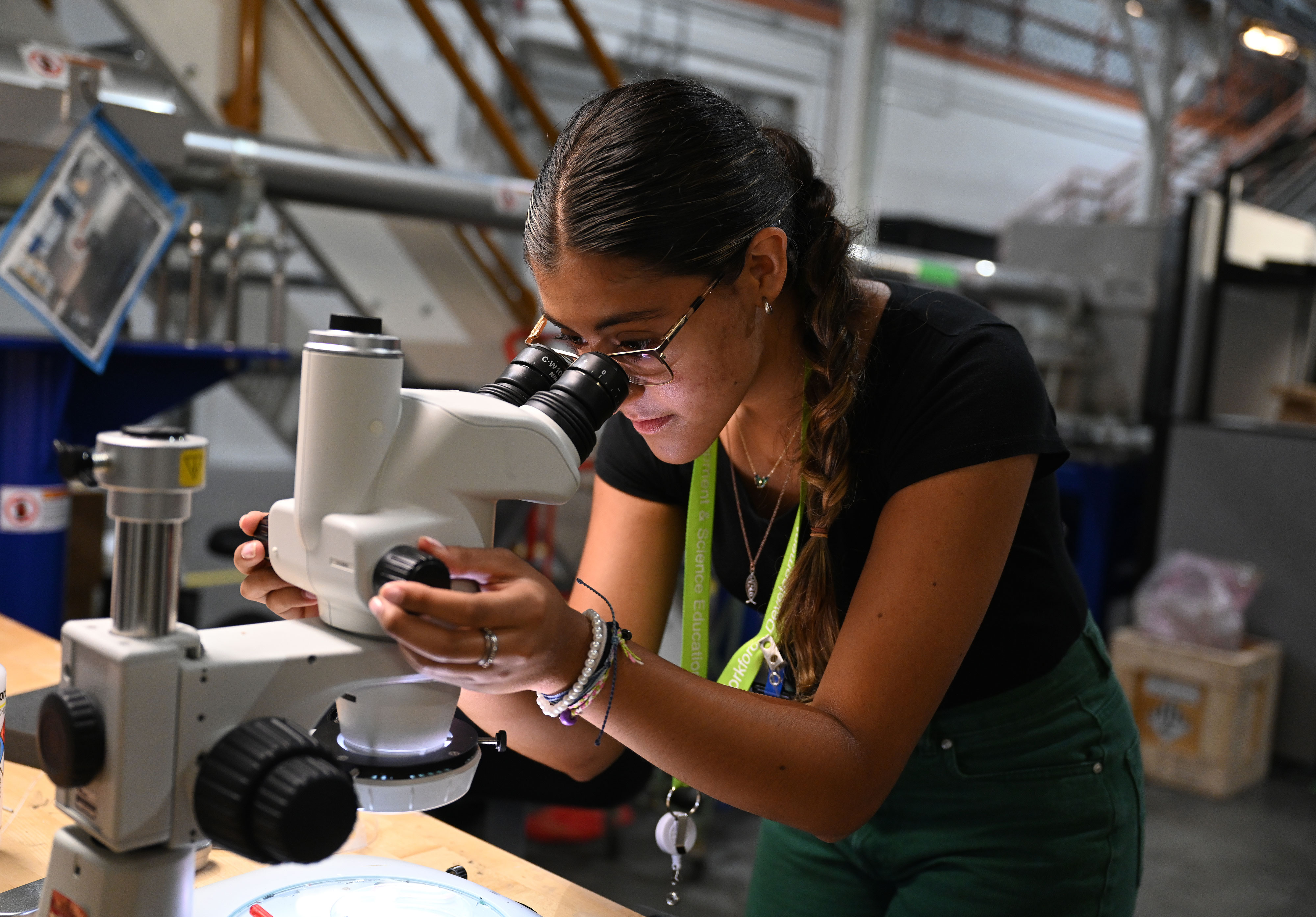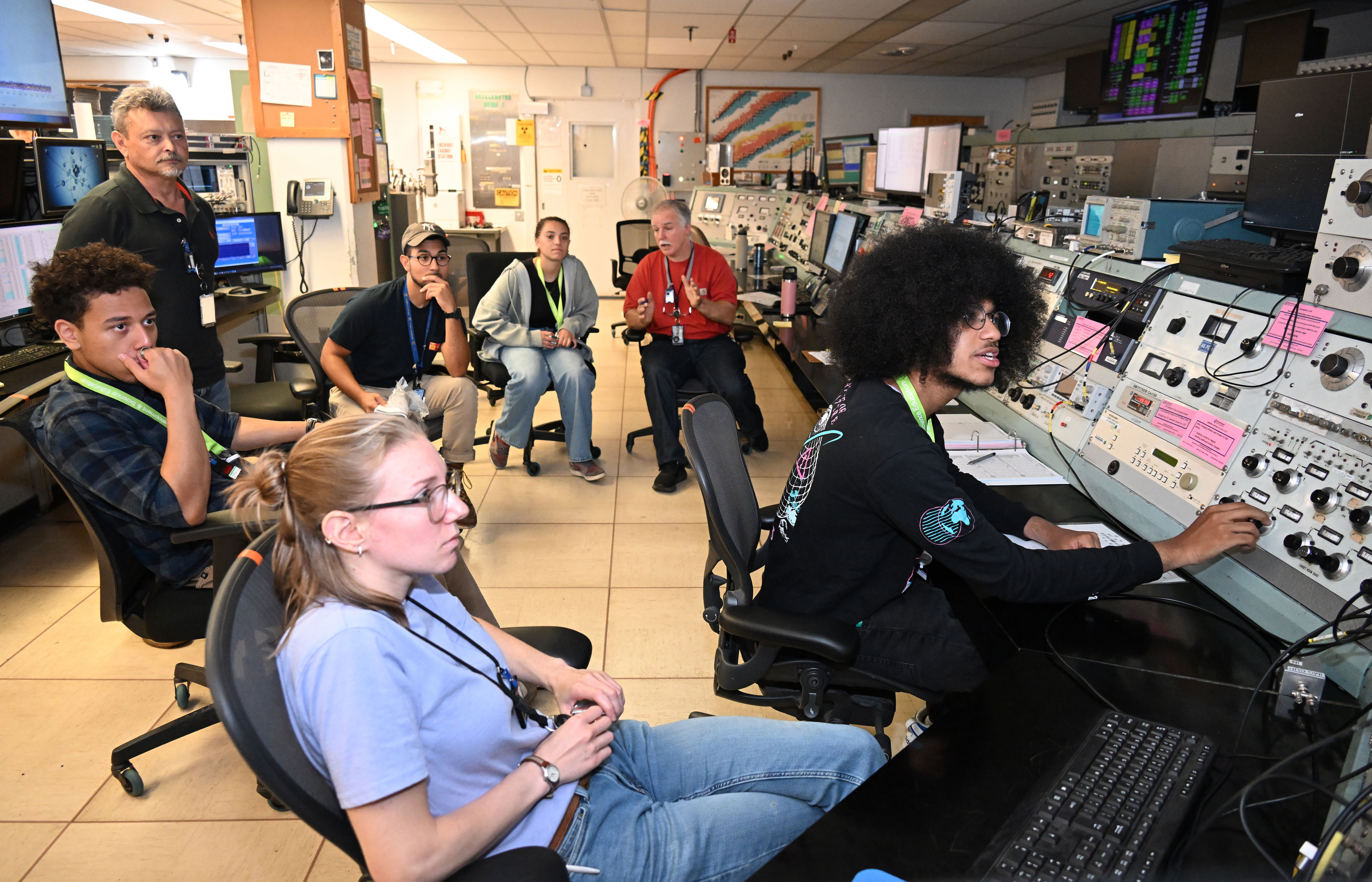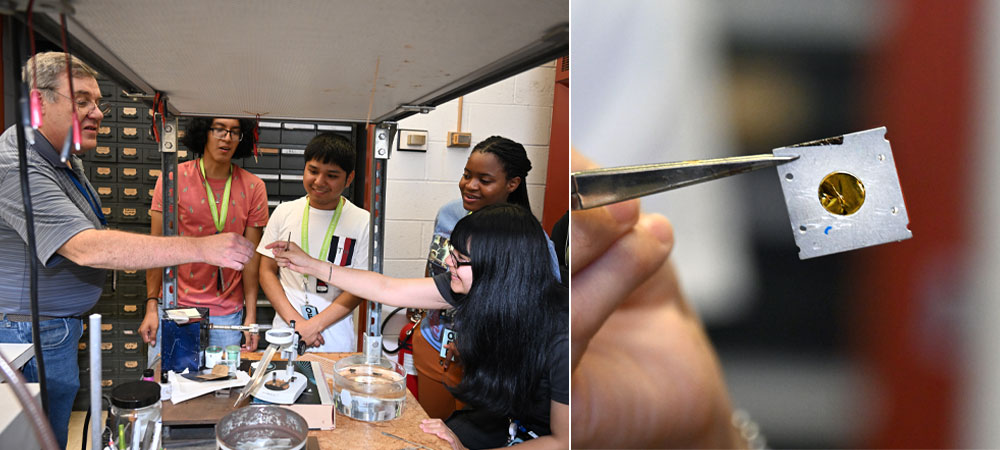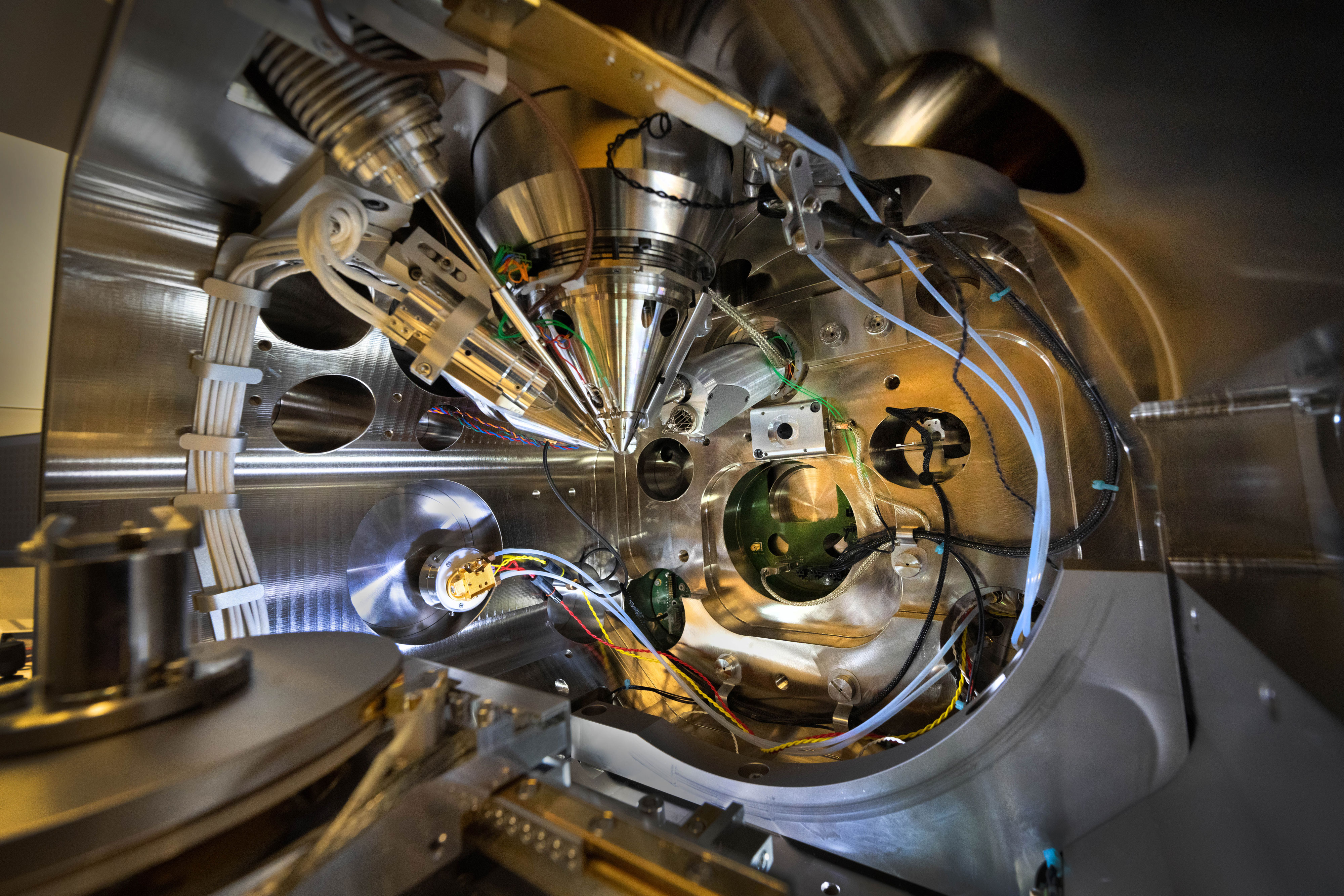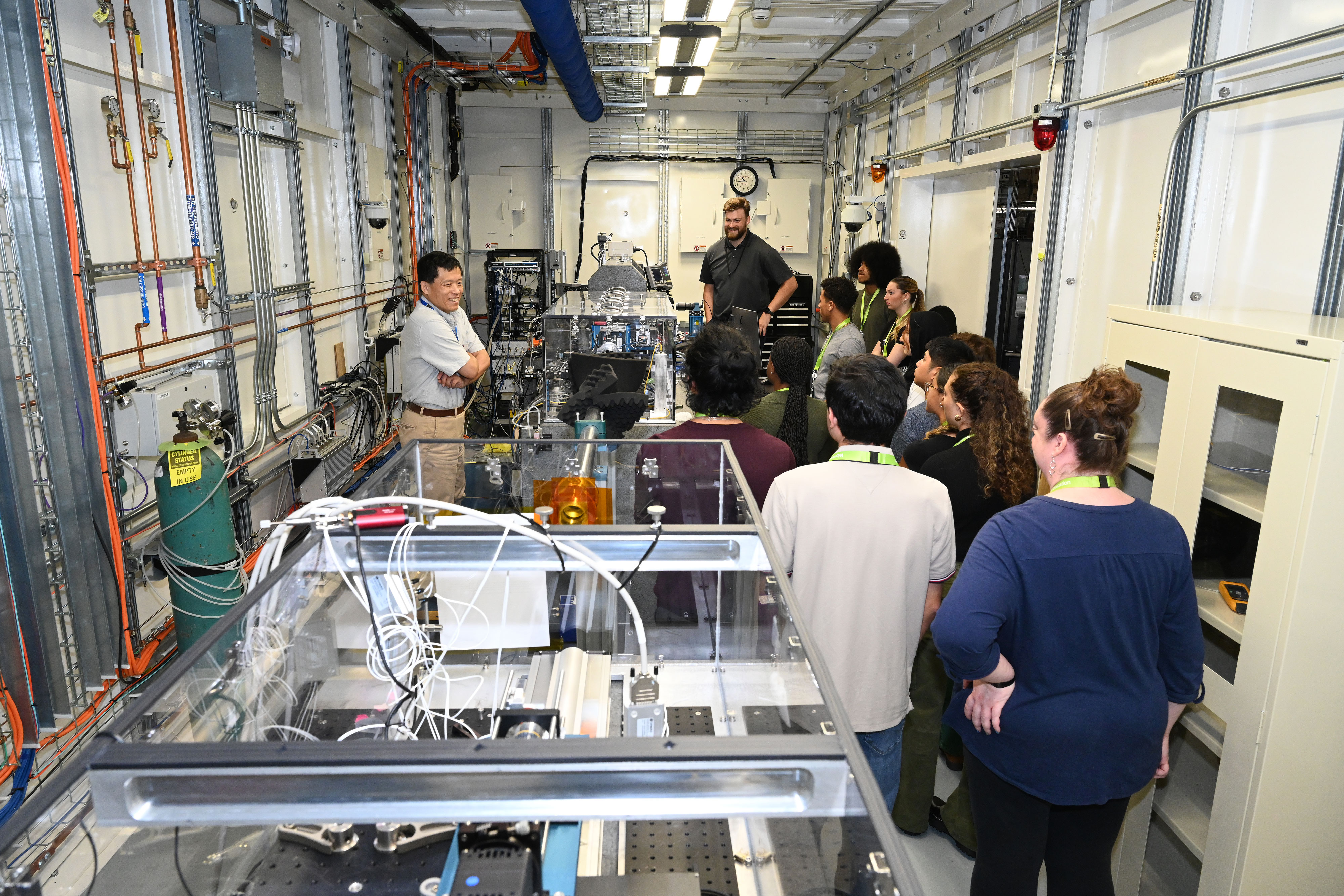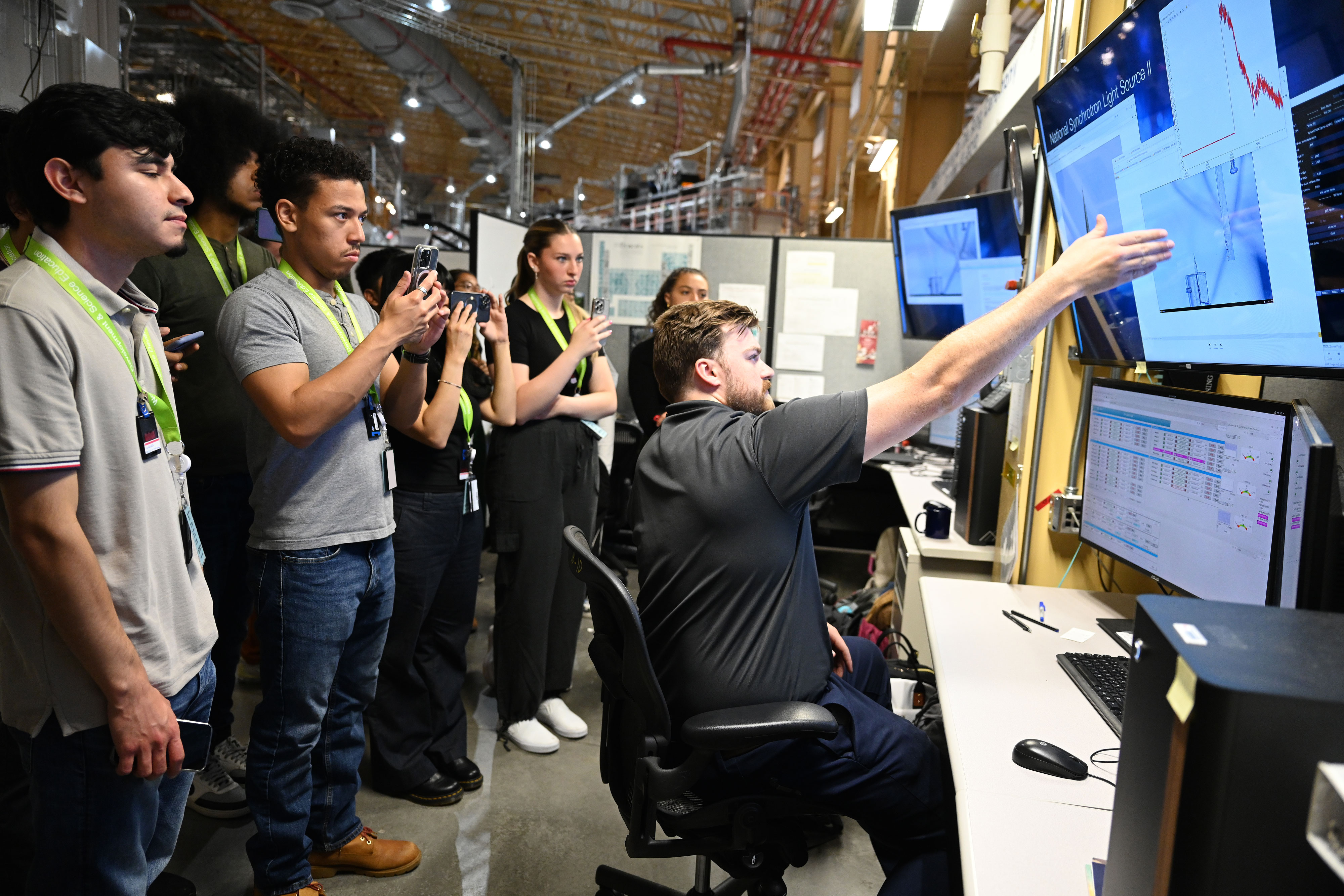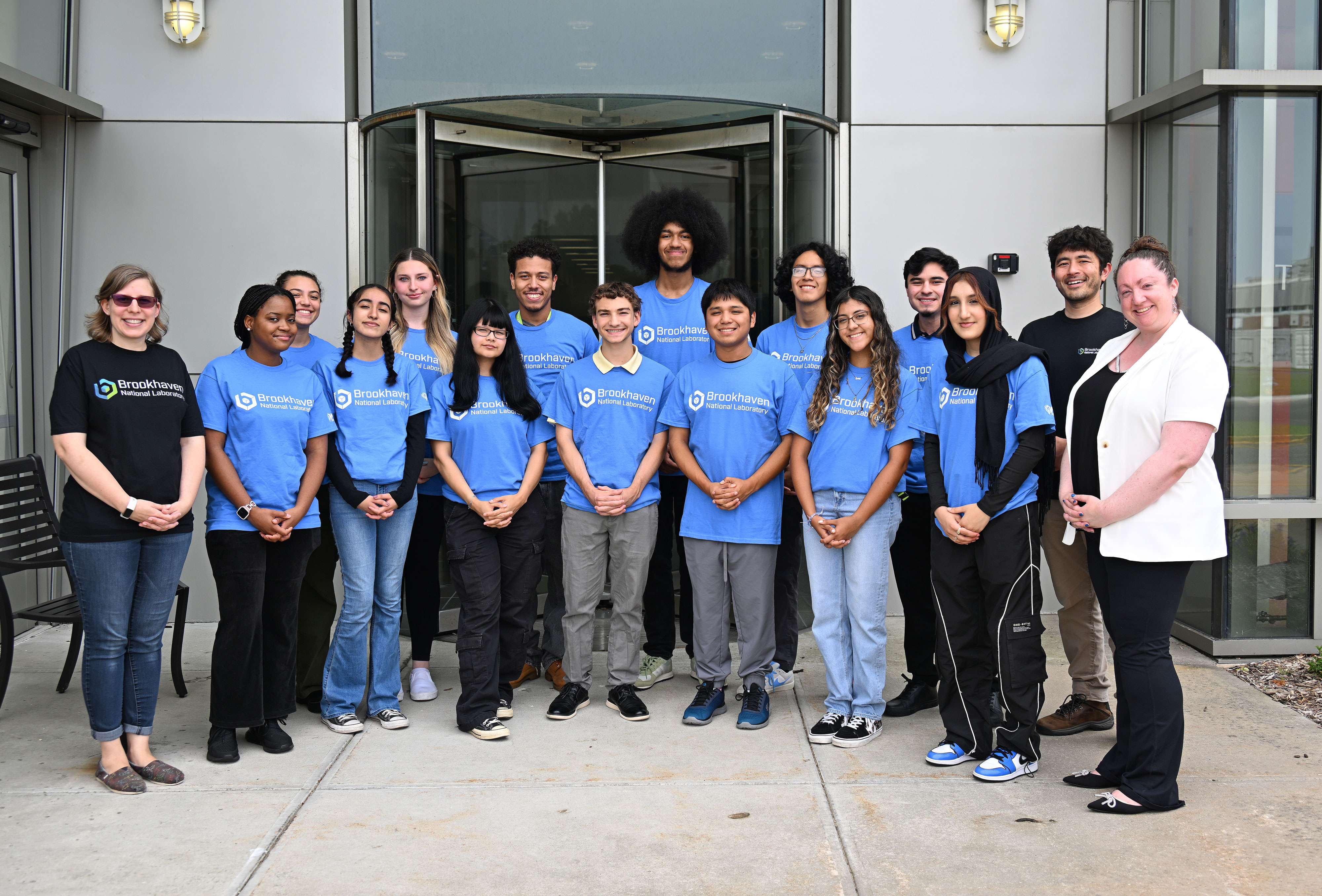Newswise — The U.S. Department of Energy’s (DOE) Brookhaven National Laboratory is home to several state-of-the-art user facilities that are key in basic research and scientific discovery. This summer, 13 students had the unique opportunity to carry out a research project across three of them: the Tandem Van de Graaff facility, Center for Functional Nanomaterials (CFN), and National Synchrotron Light Source II (NSLS-II).
From tackling a real-world research question to experiencing first-hand how the facilities' advanced tools operate, students in the inaugural Brookhaven User Facility Summer School saw the many directions a career at a national laboratory can lead.
The four-week program provided underrepresented and underserved community college and upper high school students with an authentic, hands-on STEM experience that demonstrated how research can be conducted cross-collaboratively between user facilities.
“Part of the goal of this program is to introduce students to a national laboratory, the mission of DOE, the types of research that are conducted here, and how they can be a part of that,” said Sharon Pepenella, senior research programs representative and program co-lead from the Office of Educational Programs (OEP) at Brookhaven Lab.
The summer school, which took place from July 8 to Aug. 2, is funded as part of the DOE Office of Science Reaching a New Energy Sciences Workforce (RENEW) Pathway Summer Schools supported by the Office of Workforce Development for Teachers and Scientists (WDTS).
First-hand research
Educators and Lab staff designed a project for students to mimic and identify how vital silicon components within microelectronic devices, just like the ones found in satellites, may be damaged by cosmic radiation over time as they orbit Earth.
“This is the first summer program where students saw three different facilities and each of the facilities was crucial to one stage of the method of their study,” said Will Bertolotti, a Plainedge High School science teacher who helped develop the curriculum and coached participants on developing research skills throughout the program. “By the end of it, the students really had ownership of what they did and a greater understanding of the science that’s conducted at Brookhaven National Laboratory.”
Research kicked off at the Tandem Van de Graaff, a facility where two accelerators deliver ion beams of varying species and energies to experimental chambers.
With guidance from expert operators, students loaded silicon wafers into the chambers to bombard them with different ions and dose rates, imitating ways space radiation could damage the materials.
“Our operations staff knocked it out the park,” said Tom Kubley, Tandem operations coordinator. “The students were very engaged, very interactive. It was a real joy to have them all. Students saw the whole spectrum of staff here interacting with different education and experience levels. They could see all these paths forward, including concrete things in STEM that don’t require a Ph.D.”
Kubley and Tandem Facility Head Dannie Steski reached out to OEP last spring to find a diversity, equity, and inclusion initiative their staff could join while also getting students into the facility. At the same time, a call for RENEW proposals was out.
Educational programs administrator and program co-lead Michele Darienzo called it a “golden opportunity.”
“We had scientific staff who wanted to bring students into a user facility where we can destroy things for research, so we thought, ‘what else can we pull in?’” Darienzo said. “We can image and extract those things at CFN, then go a step further at the light source to get even more information. Everything fell into place.”
After Tandem, students brought the damaged silicon wafers to CFN, a DOE Office of Science user facility where state-of-the-art instrumentation is available to study materials at the nanoscale.
They used a dual beam (SEM/FIB) microscope to observe and extract very small samples of silicon, before and after ion bombardment, for later imaging and comparison in an X-ray beamline. The group used the machine’s electron beam to view the silicon samples and its ion beam to precisely shape and cut out tiny cylindrical samples, each about 20 microns in diameter — smaller than a human hair.
“It’s like we’re using a milling machine but at the microscale,” said CFN staff scientist Fernando Camino, who led students through the process.
Next, they transferred the extracted samples to a needle, all inside the dual beam microscope, for the next stage of their experiment at the light source.
“The students saw and operated many of the stages in the dual beam,” Camino said. “It was very nice to see their enthusiasm and motivation. I think they realized that these sophisticated machines can be used by them, and they witnessed several fundamental principles they may have studied put into practice.”
The research rounded out at NSLS-II, a DOE Office of Science user facility that directs light beams 10 billion times brighter than the sun to experimental stations called beamlines. There, the group sought to image their samples to analyze how much radiation damage they took on and compare that to undamaged silicon.
With guidance from beamline scientist Xianghui Xiao and DOE Office of Science Graduate Student Research program awardee Jonathan Goettsch from University of Michigan-Ann Arbor, students carefully mounted samples at the Full Field X-ray Imaging (FXI) beamline.
To capture a full 360-degree image of a sample’s structure, the tiny silicon sample spins in a circle. Students helped rotate the sample to get the images, said Lisa Miller, a chemist and manager of the User Services, Communications, Education, and Outreach office at NSLS-II.
“It’s very much like a hospital CT scan, but we see features at the nanoscale — 1,000 to 10,000 times smaller,” Miller said.
Beamline imaging can reveal just how much silicon was worn away by radiation, Miller noted. That sort of repeated destruction in satellite computer chips over time in space would cause the devices to stop working. Seeing that damage at the nanoscale allows scientists to understand what’s happening in the very early stages and design new materials that resist this damage.
“The students conducted a true, real-world experiment,” Miller said, “while we really learned through this project the types of things that the three facilities can work on together.”
Kaylie Michael, a senior at Rocky Point High School with an interest in biochemistry, said the program’s hands-on learning research in multiple facilities stood out to her while exploring the Lab’s educational offerings.
“Seeing so many different people who have so many different specialties and so much knowledge in different areas is really cool,” she said. “My big takeaways are that there is a place for everyone at Brookhaven Lab and you can keep coming back as long as you want to come back and there’s going to be a spot for you.”
Continuing connections
Throughout the program, students toured facilities across the Lab and heard from staff about their careers, interns-turned-employees, and DOE guest speakers.
A visit to the Superconducting Magnet Division was a highlight for Ian Chitty, who graduated from Suffolk County Community College this past spring. While meeting division staff, Chitty found that someone there attended Vaughn College, where he’s now attending, and majored in the same area he’s studying there, mechatronics engineering.
“He saw a direct pathway into Brookhaven Lab and knows now ‘Someone has done this before you,’” Pepenella noted.
Chitty previously participated in the 2018 STEM-Prep Summer Institute at Brookhaven Lab, a program designed to introduce high school students from traditionally underrepresented and underserved communities to a range of topics. He and fellow cohort members have already started planning out how they can return to Brookhaven Lab for internships, other programs coordinated by OEP, and careers they can one day pursue at the Lab.
He said a major program takeaway is knowing “all the different programs I can still take, all the different possibilities of different things I can do at Brookhaven National Laboratory and opportunities at a laboratory.”
The summer experience wrapped up with student presentations on Aug. 2. Mentors, instructors, and speakers from throughout the summer school came out to support the students and hear about their research.
"We had a lot of people come check it out,” Darienzo said. “I think the students touched some lives here, too, not just the other way around.”
Brookhaven National Laboratory is supported by the Office of Science of the U.S. Department of Energy. The Office of Science is the single largest supporter of basic research in the physical sciences in the United States and is working to address some of the most pressing challenges of our time. For more information, visit science.energy.gov.
Follow @BrookhavenLab on social media. Find us on Instagram, LinkedIn, X, and Facebook.

